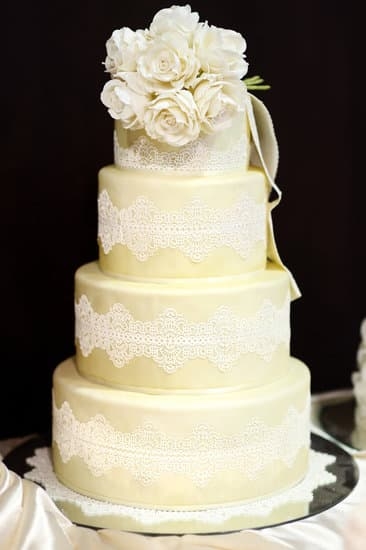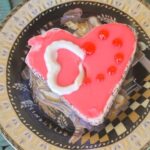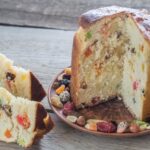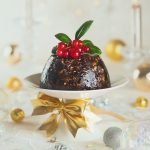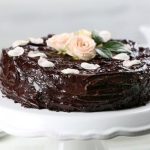Buttercream decorations for cakes have become a popular choice for adding elegance and creativity to desserts. Whether it’s a simple birthday cake or an elaborate wedding cake, buttercream frosting offers endless possibilities for creating stunning designs and intricate details. From delicate flowers to elaborate borders, the versatility of buttercream allows bakers to showcase their artistic skills and elevate their cakes to new heights.
The history of buttercream frosting dates back centuries, with each region developing its own unique variations. American buttercream is known for its simplicity and sweetness, while Swiss meringue buttercream offers a lighter texture. Italian buttercream is made using a cooked sugar syrup, resulting in a smooth and creamy frosting, while French buttercream uses egg yolks for a richer flavor. Understanding the different types of buttercream frosting is essential for achieving the desired consistency and flavor profile for your decorations.
In order to create beautiful buttercream decorations, bakers need the right tools and ingredients at their disposal. Piping bags, tips, offset spatulas, food coloring gels, and different types of butter are essential for achieving clean lines, intricate designs, and vibrant colors. By mastering these tools and ingredients, bakers can unleash their creativity and transform ordinary cakes into works of art that are sure to impress on any occasion.
History of Buttercream Frosting
Development of Buttercream Frosting
Buttercream frosting has a rich history that dates back centuries. The origins of buttercream can be traced to European countries, where it was initially made with just butter and sugar. Over time, the recipe evolved to include other ingredients such as eggs, cream, and flavorings. In the early 20th century, American bakers began experimenting with different variations of buttercream frosting, leading to the creation of unique styles like American, Swiss, Italian, and French buttercreams.
Popularization of Buttercream Frosting
Buttercream frosting gained popularity in the United States during the mid-20th century when home baking became a common practice. The simplicity of making buttercream – with just a few basic ingredients and easy preparation process – made it a favorite choice for both professional bakers and home cooks. The smooth texture and creamy taste of buttercream quickly made it a staple in cake decorating.
Modern Adaptations of Buttercream Frosting
With advancements in baking techniques and tools, buttercream decorations for cakes have become more elaborate and intricate. Today, bakers use various methods to create stunning designs using buttercream, from piping delicate flowers to crafting intricate borders and patterns. While traditional recipes for buttercream frosting are still widely used, modern adaptations incorporate new flavors and colors to enhance the visual appeal of cakes for different occasions.
Types of Buttercream Frosting (American, Swiss, Italian, French)
Buttercream frosting is a versatile and delicious choice for decorating cakes, cupcakes, and other desserts. There are several types of buttercream frosting, each with its own unique characteristics and flavors. The four main types of buttercream frosting are American, Swiss, Italian, and French.
American buttercream is perhaps the most common type of buttercream frosting. It is made by creaming together butter and powdered sugar until light and fluffy. Sometimes a little milk or cream is added to achieve the desired consistency. American buttercream is sweet and simple to make, making it a popular choice for home bakers.
Swiss meringue buttercream is made by whipping egg whites and sugar over a double boiler until it reaches a certain temperature, then mixing in softened butter. This type of buttercream has a smooth texture and is less sweet than American buttercream. It is known for its stability and ability to hold intricate designs well.
Italian meringue buttercream involves creating a sugar syrup that is poured into whipped egg whites while beating until stiff peaks form. Softened butter is then incorporated into the mixture. Italian meringue buttercream has a silky texture and a shiny appearance.
French buttercream, on the other hand, is made by beating egg yolks over hot water until pale and thick before adding softened butter. This type of buttercream has a rich flavor due to the egg yolks but can be delicate to work with compared to others.
| Buttercream Type | Description |
|---|---|
| American | Sweet and simple with creamy texture. |
| Swiss | Smooth texture with less sweetness. |
| Italian | Silky texture with shiny appearance. |
| French | Rich flavor due to egg yolk content. |
Tools and Ingredients Needed for Buttercream Decorations
When it comes to creating beautiful buttercream decorations for cakes, having the right tools and ingredients is essential. Here are some of the key items you will need to get started:
Piping Tips
Piping tips come in a variety of shapes and sizes, allowing you to create different designs and textures with your buttercream. From star tips for borders to petal tips for flowers, having a selection of piping tips can really elevate your decorating skills.
Piping Bags
Piping bags are used to hold the buttercream frosting and attach the piping tip. Disposable piping bags are convenient for easy cleanup, while reusable ones are more environmentally friendly. Make sure to have a few on hand so you can easily switch between colors and designs.
Buttercream Frosting
Of course, you can’t create buttercream decorations without buttercream frosting. Whether you choose American, Swiss, Italian, or French buttercream, make sure your frosting is at the right consistency for piping. It should be smooth and able to hold its shape when piped onto the cake.
Food Coloring
To add a pop of color to your buttercream decorations, invest in gel food coloring. Gel colors are more concentrated than liquid food coloring, so they won’t change the consistency of your frosting. With a variety of colors at your disposal, you can bring any design or theme to life on your cakes.
These essential tools and ingredients will set you up for success when creating stunning buttercream decorations for cakes. Experiment with different techniques and designs to unleash your creativity and impress your friends and family with beautifully decorated desserts.
Techniques for Creating Buttercream Flowers
Buttercream flowers are a beautiful and versatile way to decorate cakes for any occasion. Creating lifelike flowers using buttercream frosting can elevate a simple cake into a stunning piece of art. There are several techniques that can be used to pipe different types of flowers, such as roses, daisies, tulips, and more.
One popular technique for creating buttercream flowers is the piping method, where buttercream is piped onto the cake in a specific pattern to mimic the petals of a flower. This method requires the use of different piping tips to create varying shapes and sizes of petals. Another technique often used is the petal spreading method, where buttercream is spread onto a flower nail in layers and then shaped into petals using a spatula or other shaping tools.
When creating buttercream flowers, it is important to pay attention to details such as color gradients, petal arrangement, and leaf placement. By practicing different techniques and experimenting with colors and shapes, decorators can achieve stunning floral designs that will impress clients and guests alike. Whether it’s a simple birthday cake or an elaborate wedding cake, buttercream flowers add a touch of elegance and sophistication to any dessert.
Tips for Piping Buttercream Borders and Designs
Piping buttercream borders and designs is an essential skill for cake decorators looking to add intricate and beautiful details to their creations. Using the right techniques can elevate a simple cake into a stunning work of art.
One key tip for piping buttercream borders and designs is to ensure that your buttercream is at the correct consistency. If it’s too stiff, it will be difficult to pipe, and if it’s too soft, your designs may not hold their shape.
Another important tip is to practice with different piping tips to achieve various border styles such as shells, rosettes, or zigzags. Each tip creates a unique design, so experimenting with different shapes and sizes can help you find the perfect border for your cake. It’s also crucial to practice your piping technique on parchment paper or a practice board before moving on to the actual cake to ensure precision and control.
When piping buttercream designs, consistency in pressure is key. Maintaining a steady pressure while piping will help you achieve smooth and consistent lines throughout your design. Additionally, holding the piping bag at the right angle will also impact how the buttercream comes out of the tip. A 45-degree angle is generally recommended for most borders and designs but playing around with different angles can result in creative and eye-catching finishes.
| Key Tip | Detail |
|---|---|
| Buttercream Consistency | Ensure that your buttercream is at the correct consistency for piping. |
| Piping Tips | Experiment with different piping tips to achieve various border styles. |
| Pressure & Angle | Maintain consistent pressure while piping and try different angles for creative results. |
Buttercream Decorations for Different Occasions (Birthdays, Weddings, Holidays)
When it comes to celebrating special occasions, buttercream decorations for cakes can truly elevate the dessert to a whole new level. Whether it’s a birthday, wedding, or holiday gathering, buttercream decorations offer endless possibilities for creating stunning and personalized designs that will leave your guests in awe. From intricate floral designs to simple yet elegant borders, buttercream frosting allows for creativity and customization to suit any celebration.
To help you navigate through the world of buttercream decorations for different occasions, here are some ideas and techniques that you can incorporate into your cake decorating repertoire:
- Birthdays: For birthday cakes, consider incorporating vibrant colors and fun shapes using buttercream frosting. You can create cute animal characters, colorful balloons, or even whimsical patterns to match the theme of the party. Adding edible glitter or sprinkles on top of the buttercream can also add a festive touch.
- Weddings: Buttercream decorations are a popular choice for wedding cakes due to their versatility and elegant appearance. Consider using delicate piped flowers such as roses, peonies, or hydrangeas to create a romantic and timeless look. You can also opt for intricate lace designs or monogram initials using buttercream frosting to add a personalized touch to the cake.
- Holidays: Whether it’s Christmas, Easter, or Halloween, buttercream decorations can be tailored to suit any holiday celebration. For Christmas cakes, consider piping snowflakes or holly leaves with red berries using buttercream frosting. For Easter cakes, pastel-colored flowers or bunny designs are always a hit. And for Halloween cakes, spooky ghosts or pumpkins made from buttercream can add a festive and playful element to your dessert spread.
With the right tools, ingredients, and techniques at your disposal, you can create show-stopping buttercream decorations for any occasion that will not only impress your guests but also showcase your creativity and flair as a cake decorator. Let your imagination run wild and experiment with different designs to make each celebration truly memorable with beautiful buttercream decorations on your cakes.
Troubleshooting Common Buttercream Decoration Issues
Buttercream decorations for cakes are a popular choice for adding beauty and flavor to any dessert. However, even experienced bakers may encounter some common issues when working with buttercream frosting. Here are some troubleshooting tips to help you overcome these challenges:
- Problem: Buttercream is Too Runny
If your buttercream frosting is too runny, it may be due to the temperature of your ingredients or overmixing. To fix this issue, try refrigerating the frosting for a short period of time to allow it to firm up. You can also add more powdered sugar gradually until you achieve the right consistency. - Problem: Buttercream is Too Stiff
On the other hand, if your buttercream is too stiff and difficult to pipe or spread, you can try warming it slightly by placing the bowl in a warm water bath or using a heat gun on low setting to soften it up. Be sure not to overheat the frosting as it can melt and lose its structure. - Problem: Buttercream is Graining
Grainy buttercream can result from using cold butter or adding ingredients at different temperatures. To smooth out grainy texture, try whipping the frosting at room temperature or incorporate small amounts of warm milk while mixing until the grains disappear.
By following these troubleshooting tips, you’ll be able to overcome common buttercream decoration issues and create stunning designs for your cakes. Remember that practice makes perfect, so don’t get discouraged if you encounter challenges along the way. With patience and creativity, you’ll soon master the art of working with buttercream decorations like a pro.
Conclusion
Buttercream decorations for cakes have truly stood the test of time, evolving from simple designs to intricate creations that add a touch of beauty and elegance to any celebration. Whether it’s a birthday, wedding, or holiday event, buttercream decorations have become a staple in the world of cake decorating. The versatility of buttercream allows for endless possibilities, from delicate flowers to elaborate borders and designs.
One of the key factors that make buttercream decorations so popular is the wide range of styles and techniques available. Whether you prefer the sweetness of American buttercream, the lightness of Swiss meringue buttercream, the richness of Italian buttercream, or the decadence of French buttercream, there is a type of buttercream that suits every taste and occasion. Each type offers its own unique texture and flavor profile, allowing decorators to experiment and create stunning works of edible art.
In conclusion, mastering the art of buttercream decorations opens up a world of creative possibilities for both amateur bakers and professional decorators alike. With just a few tools and ingredients, you can transform a simple cake into a masterpiece that will wow your friends and family.
So why not give it a try and explore the beauty and versatility that buttercream decorations have to offer? Let your creativity flow as you pipe out stunning flowers, elegant borders, and intricate designs on your next cake masterpiece.
Frequently Asked Questions
What Is the Best Buttercream to Decorate a Cake?
The best buttercream to decorate a cake is typically Swiss meringue buttercream. This type of buttercream is silky smooth, stable, and easy to work with. It can hold its shape well for piping designs and decorations.
How to Make Decorations With Buttercream?
Making decorations with buttercream involves using different piping tips to create various shapes and designs. Techniques like rosettes, shells, ruffles, and borders can be achieved by adjusting the pressure on the piping bag and the angle at which you hold it. Practice and patience are key to mastering buttercream decorations.
Do You Decorate Cakes With Buttercream?
Decorating cakes with buttercream is a popular choice due to its versatility and delicious taste. Buttercream can be tinted in different colors, piped into intricate designs, or smoothed onto cakes for a clean finish. Whether it’s for birthdays, weddings, or special occasions, buttercream is a classic option for decorating cakes.

Welcome to our cake decorating blog! My name is Destiny Flores, and I am the proud owner of a cake decorating business named Cake Karma. Our mission is to provide delicious, beautiful cakes for all occasions. We specialize in creating custom cakes that are tailored specifically to each customer’s individual needs and tastes.

